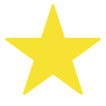10 facts about butterflies
Butterflies are some of our favourite garden visitors! They arrive when temperatures are warmer, and they greet us with their gentle fluttering flight and beautiful colours.

But why are we so fascinated by this insect? Is it their colour? Their changing life cycle? Or maybe its one of these ten facts about them that make us so fascinated!
Fact #1 - Hostess with with most-ess!
Host plants help to lay a great foundation for the ultimate butterfly garden. They are plants required by a caterpillar for growth and development and are used by the female butterfly to lay her eggs, so encourage her to stick around for a while. Likewise, male butterflies will also go to certain host plants to look for a mate.
Butterflies are incredibly fussy with their host plant, so very rarely stray from their favourites. One of the most popular host plants is Milkweed, which hosts the Monarch butterfly. Painted Lady butterflies are mainly attracted to Asters, Hollyhock or Ironweed. All that egg laying is thirsty work, so it's important to have nectar rich wildflowers that butterflies love planted near to your host plants also.
Fact #2 - They taste with their feet
Luckily, we don't share the same sampling habits with butterflies - who taste with their feet! Butterflies have taste sensors on their feet that help them weed out the tastiest treats for their species - their feet can detect whether a plant is sweet, sour, bitter or salty. For female butterflies, this will also influence where they decide to lay their eggs. Now we know how they taste, let's find out how they eat...
Fact #3 - All liquid diet
Due to their unique life cycle, butterflies have a very different diet compared to their caterpillar stage. Butterflies love to 'eat', but their food of choice is exclusively liquid. Butterflies don’t have the necessary equipment for chewing and instead use a 'proboscis', a straw-like mouthpiece which allows them to suck up nectar. Whilst nectar is a butterflies first food of choice, they are known to also favour sap and the liquid that comes from rotting fruit.
Fact #4 - Amazing scales!
Probably one of the most interesting facts about butterflies is that they have transparent wings. Their wings are made up of a multitude of miniature scales, thousands of them! So the beautiful colours you see when a butterfly passes by is the reflection of lots of different colours in their scales. You can tell a younger butterfly from an older butterfly, as when a butterfly ages, scales begin to fall off their wings, leaving spots of transparency.
Fact #5 - Sleep is for the weak...
Scientifically speaking, butterflies don’t sleep. Instead, they enter a 'quiescent state' that ensures that they have enough rest to go about their day, fluttering away. Think of it as the human equivalent of 'I'm just shutting my eyes for a few moments'!
Their quiescent state is a period of inactivity or dormancy. Their body will enter a low metabolic state and will become inactive. Unlike a human sleep cycle, butterflies don’t particularly rest when it is night-time. Instead, they rest when it becomes too cool, and they need to conserve energy. After all, butterflies are cold-blooded, and their activity is fuelled by heat.
Fact #6 – Need for heat
As cold-blooded insects, butterflies are unable to regulate their own body temperature. So, their surroundings and environment can have a huge impact on their ability to function, as well as their lifespan. Not many of us like cold weather, but for butterflies, it isn’t a case of not liking it; they really can’t function in lower temperatures! They need an ideal body temperature of 29 degrees Celsius to fly.
If the air temperature falls below this, butterflies are rendered immobile—unable to flee from predators or feed. So, if you are planting wildflowers in your garden, be sure to do this in a sunny spot to allow the butterflies to stay warm.
Fact #7 - Tricks of the trade!
In comparison to other insects, birds and animals, butterflies fall pretty low on the food chain. Other hungry predators further up the food chain would happily make a meal of them, so butterflies need a defence mechanism. Some will fold their wings in an attempt to blend into the background, while others will take a different approach by wearing a vibrant pattern to announce their presence boldly. Brightly coloured insects often pack a toxic punch if eaten, so predators learn to avoid them.
Fact #8 - It's all in the eyes
Butterflies are known for having the widest visual range of all wildlife, even better than human eyesight. Butterflies can see a range of ultraviolet colours that are invisible to the human eye. The butterflies themselves may even have ultraviolet markings on their wings to help them identify one another and locate potential mates. Flowers, too, display ultraviolet markings that act as traffic signals to incoming pollinators like butterflies.
Fact #9 - Here for a good time, not a long time!
Unfortunately, like most insects, the lifespan of a butterfly isn’t very long. The butterfly life span depends on its species and environment. For example, the average lifespan of Monarch butterflies in good conditions (mainly in Central and South America) is up to 9 months. However, in other areas which don’t offer their ideal living conditions, they would typically live up to 6 weeks only. The life span of butterflies can be between a day to several months.
At least one species of butterfly lives for approximately 24 hours, while some migratory butterflies, like the North American Monarch we mentioned, can live much longer. While they're here however, it's important to provide as many pollen rich plants as we can, so they can go on producing the next generation!
Fact #10 - That's one big family!
Butterflies are found in almost every part of the world, from the Arctic to the tropics, and are incredibly diverse – with around 175,000 known species in the family. Some are small, like the Western Pygmy Blue, which is about a centimetre in size. Others, like the Queen Alexandra butterfly, can reach about the same size as a dinner plate when its wings are outstretched.
And while some come in bright, bold, and beautiful colours, others, like the glass-winged butterfly, have wings that are completely see-through.
In total, there are around 56 species of butterflies in the UK, 22 of which can be recorded in gardens – So keep an eye out for them when the temperatures rise!






